What is my Favourite Dinosaur?
Part 1: Herbivores
A blog post by Felicity
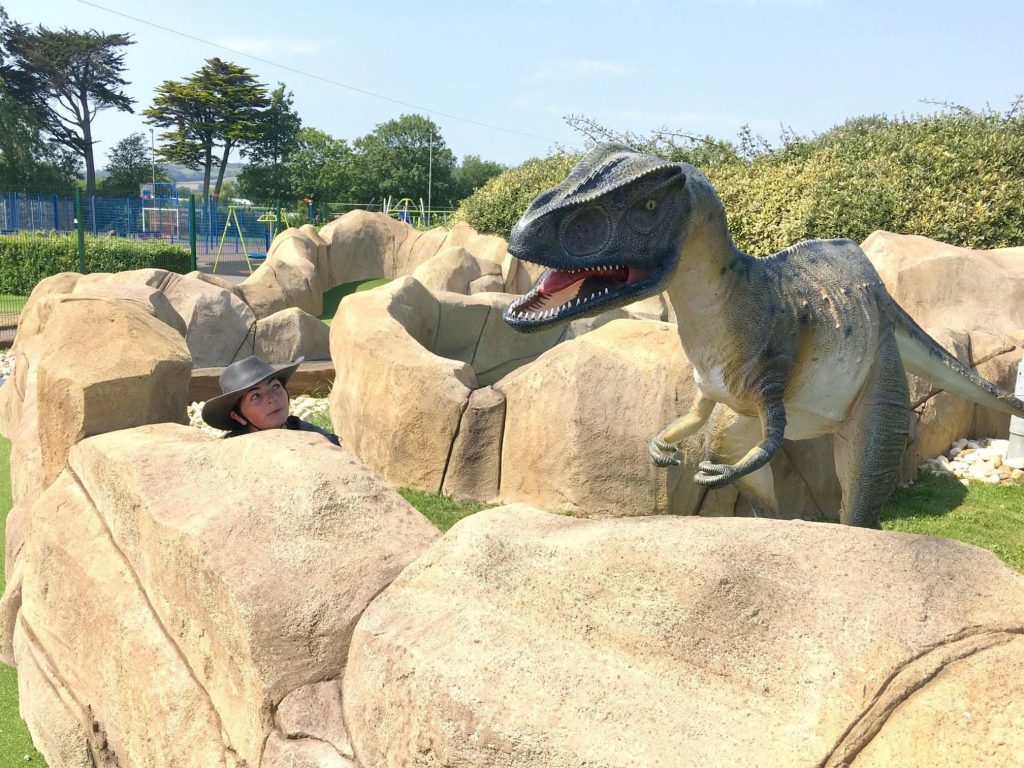
In June 2020, after our trip to Romania (where we filmed Romania : Seeking Dracula’s Castle), I wrote a blog post entitled ‘Dinosaurs: Yes Please’. That post touches a little on my background and why dinosaurs are still so appealing to me and of such significance in my life, but in this post I want to deal with a very important dinosaur related question.
I am frequently asked: ‘What is your favourite Dinosaur?’
Usually it is asked by people joining me on one of my Island Gems fossil hunting trips but most recently it was asked by a friend and the newest addition to our fossil guide team. This is always a difficult question for me as I genuinely don’t feel I really have a favourite.
Like most children I loved dinosaurs. I believe today there are many films and programmes involving dinosaurs which are suitable for children. I don’t remember much choice from my youth but the films I do remember are the ‘Land Before Time’ films. The first film dates back to 1988 and they are still being made to this day.
Most adults, unless they’ve relearnt the names due to their own child’s interest, can only name a handful of dinosaurs. These tend to be Triceratops, Stegosaurus, T-Rex and one of the sauropods.
Interestingly, when it comes to the sauropods (long-necked dinosaurs), the names people know vary. Some people know the Brachiosaurus, some know Brontosaurus and some say Diplodocus.
Thanks to Jurassic Park a lot of people also know the name of the carnivore Velociraptor, but what they picture is the fictitious Steven Spielberg dinosaur rather than the turkey sized fossil the name is actually linked to. Before anyone gets upset- don’t worry- there are plenty of real dinosaurs similar to Jurassic Parks velociraptor but they have other names such as Deinonychus, Utahraptor or Allosaurus to name but a few.
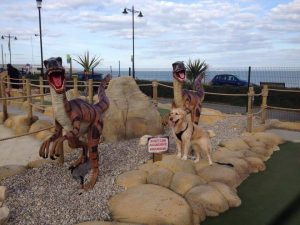
The animated ‘Land Before Time’ film franchise includes many of these dinosaurs. The main characters are Littlefoot the brave main protagonist Apatosaurus/ Brontosaurus (in my previous blog post about dinosaurs I believe I explain briefly about some of the issues with dinosaur species being mixed up!), Cera the boisterous triceratops, Ducky the happy-go-lucky, optimistic Saurolophus, Spike the gentle giant Stegosaurus, Petrie the nervous Pteranodon and there is often a scary ‘Sharptooth’ T-Rex keeping everyone on their toes somewhere in the story.
As a child my family likened me to Ducky the Saurolophus. I mentioned this to my sister just now and she said ‘Friendly, sweet, talks to anyone, likes swimming and splashing in puddles… still holds true’. I have to say I have always had a soft spot for the species.
In 1993 Steven Spielberg created Jurassic Park based on the Michael Crichton book of the same name. I was only aged three when the film was released and though it was not a child-friendly film, I was that obsessed with dinosaurs I was allowed to watch the film when it was later released on video (or possibly when it was shown on tv) and I was hooked! I remember I was at my Nans house when I first watched it, surrounded by family so likely at Christmas in approximately 1995 or 96 I would guess. I was so keen that my family gifted me a set of dinosaur toys, some of which had removable parts so you could look at the organs and bones inside the dinosaurs. They were great, not just because they were cool but because they also acted as a bedroom guard against my sister for a short time (as she found them too gruesome to get close to!).
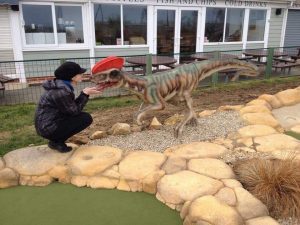
The film portrays a dinosaur called the Dilophosaurus. A frilled dinosaur with venomous spit. To quote the film, ‘A beautiful but deadly addition to Jurassic Park’.
I particularly liked the sound that these dinosaurs make in the film, playful chirrups and chirps. I found them adorable (until they spit) and beautiful when they open and shake their frills. A beautiful frilled-lizard dinosaur. I was also given a toy of this species which had a button to pop open the frills. I am a herbivore and saw carnivores as a bit mean but I liked this dinosaur and it became one of my favourites.
Sadly, this portrayal of Dilophosaurus was also somewhat inaccurate. Where the film made velociraptor bigger than reality, it made Dilophosaurus smaller. In the film they looked to be about 6 foot long at most, whereas in reality they would have been about 23 feet long!
The impressive neck frill resembling that of some modern lizards is also inaccurate for this dinosaur though it did have a pair of longitudinal arched crests on its skull, likely enlarged by keratin. Lastly the venomous spit that made this dinosaur so formidable and memorable in this film was also fictional. While some dinosaurs would have had a poisonous bite similar to that of a Komodo Dragon (due to grooves in the teeth and poor hygiene rather than any toxin or venom) to my knowledge no dinosaur actually had venom.
As I got older and learned more about dinosaurs it became harder to choose a favourite, rather than easier. They all have incredible features or adaptations.
Some of the armoured dinosaurs for example (picture the ankylosaurs – the armoured tanks covered in spikes with a club at the end of their tail) even had armoured bony plates on their eye lids. The vegetation they had to eat was often sharp, so they needed this to protect their eyes (although scans of their skulls suggest it was their sense of smell they relied on most). The downside is that the thick armour on their skull didn’t leave a lot of space for their brains. The herbivore dinosaurs weren’t graced with brain power, that went more to the carnivores, but it didn’t stop there from being an incredible array of herbivore species.
When you consider that something like 700 species of dinosaurs have been named and more being discovered each year, it seems somewhat unfair to expect me to have a favourite, especially with such diversity to choose from.
Do you go for one of the long-necked sauropods? If so, which one?
Do you go for the largest such as the Patagotitan or the Argentinosaurus which are estimated to have been 122-131 feet long and weighing in at approximately 77-110 tons, or do you agree with Greg and go for one of the smallest Sauropods such as the Europasaurus or (Greg’s favourite) the Magyarosaurus. These were approximately 20 feet long and weighed about the same as a modern day cow or, at most, 1 ton (Greg likes the Magyarosaurus due to it being the biggest dinosaur found in Romania but one of the smallest sauropods found in the world!).
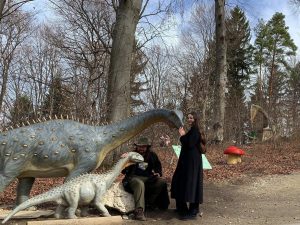
Do you go for the famous three-horned Triceratops, or do you delve a little deeper and discover that Triceratops is just one member of the Ceratopsian family and that this group has so many cool dinosaurs such as the Styracosaurus, with its incredible display of long face and frill horns, or the Protoceratops, who is all frill and no horn!? Do you go for Diabloceratops for its wicked name (which means ‘Devil horned-face’) and its scary appearance, or do you choose Pachyrhinosaurus for the fact it’s kind of an amalgamation of the Pachycephalosaur (another awesome dinosaur), a rhino and a Triceratops? Added to that, some of the Ceratopsian group are actually bipedal and look nothing like a Triceratops or what most of us picture when we think of the Ceratopsian group – do you choose one of those just to confuse everyone?
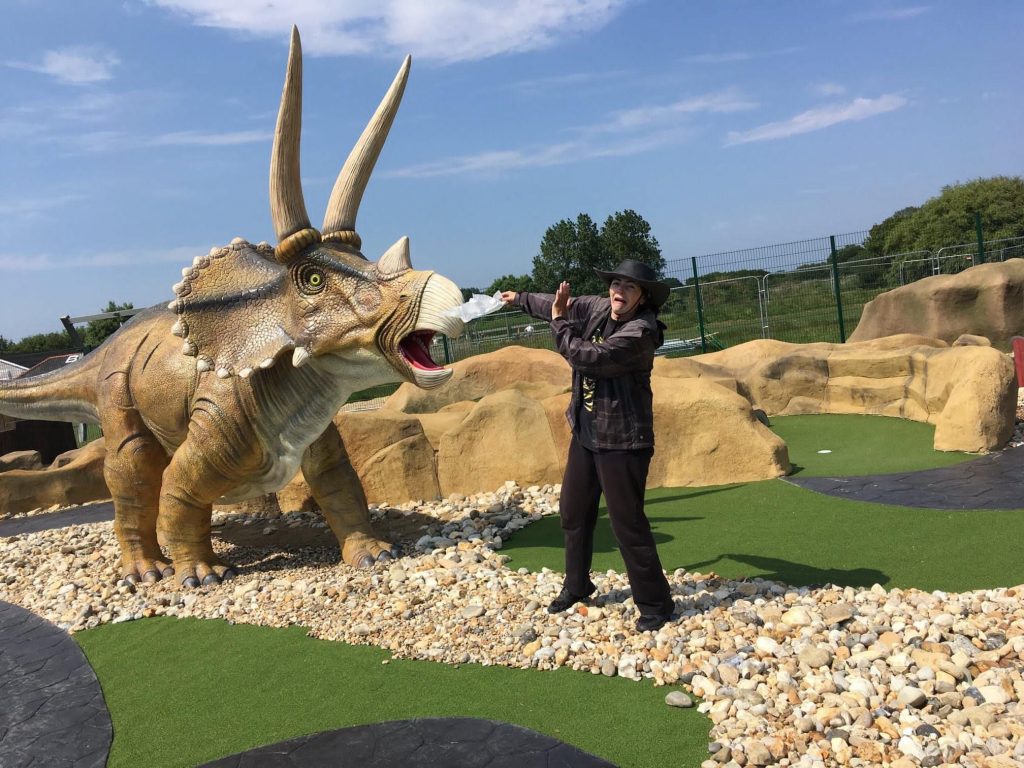
As we mentioned them perhaps you could pick Pachycephalosaurs as your favourite. The thick-headed lizard who also makes an appearance in the Jurassic Park franchise. The domed headed dinosaur that head-butts things and had a skull roof measuring 22cm / 9 inches thick! There are a few in this group you could choose as your favourite dinosaur but one that stands out to me is the Dracorex Hogwartsia. Yep, you heard me, the Dragon King of Hogwarts. For any of you Harry Potter fans, we may have found your dinosaur!
Do you prefer the Hadrosaurid family of duck billed dinosaurs? My sweet Saurolophus Ducky from Land Before Time. The one in this group I always think of is the lovely Parasaurolophus. A dinosaur that could be both bipedal and quadrupedal and with the cranial crest protruding from the rear of its head and made up of the premaxilla and nasal bones. Often depicted as ‘honking’ through that skull crest. Another one I rather like is Corythosaurus whose name means helmet lizard. You get the idea with this group I think, a lot of rather fantastic cranial crests!
Or you could go for the armoured dinosaurs we mentioned earlier – Ankylosaurs for example. About 25 feet long, quadrupedal and weighing about 8 tons. Covered in bony armoured plates, decorated with spikes and sporting a club tail. If we were talking a game of dinosaur robot wars this is a pretty scary opponent!
A less intimidating member of this group would be Minmi who would have only been about 9 feet long and weighing in at 660 pounds. This ankylosaur had long limbs compared to others in its group and it is thought that it did so in order to move quickly to hide under vegetation when a large predator was nearby.
Minmi, unlike other Ankylosaurians, had horizontal bone plates. One of my favourites in this group however is the Polacanthus. The name means ‘many thorns’ and it was an early example of a Ankylosaurian dinosaur. The reason this one is special to me from this group is because it is found on the Isle of Wight, and in fact the type species Polacanthus Foxii was found on the Isle of Wight in 1865. There are not many fossil remains of this dinosaur, but I am fortunate enough to say that Greg and I each have a fossil plate from this species, something we both treasure (though Greg (and I) were somewhat horrified when someone on one of his tours dropped the fossil and it broke!).
Another armoured dinosaur but so different in appearance to the ankylosaurs would be the more famous Stegosaurus. This quadrupedal dinosaur with its distinctive kite-shaped upright plates protruding from their back and a tail sporting vicious spikes is understandably a memorable species to behold. While most people agree that the spikes were likely used for defence the back plates are more of a puzzle and subject to some debate. Most these days seem to think those plates were either for display (attracting a mate or a territorial display) or for thermoregulation. Maybe both. Stegosaurus was approximately 29 feet long and weighed in at up to 7 tons. Once again Stegosaurus is just the most famous member of the Stegosaurid genus or group.
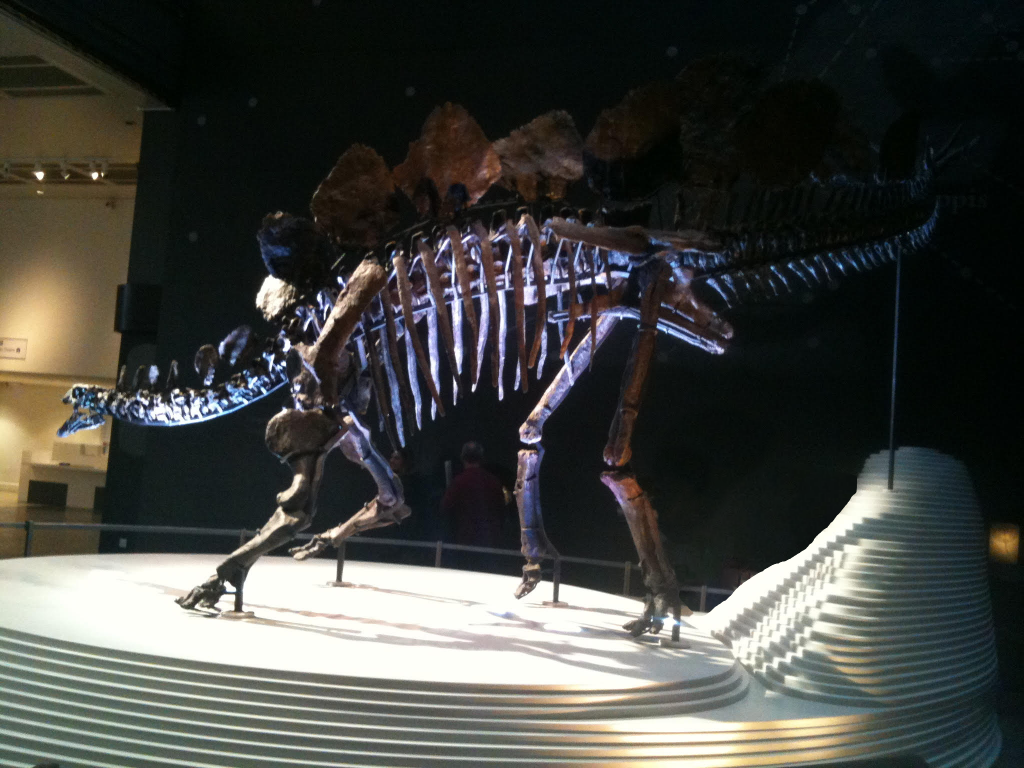
Kentrosaurus is an earlier, more primitive member of the group and this dinosaur was only 15 foot in length and weighed about 1.1 tons. This dinosaur also had the plates along its back merging into tail spikes but this dinosaur also sported shoulder spikes and, in my opinion, though smaller, had a far pricklier appearance than the Stegosaurus. A few members of the Stegosaurid group seemed to sport impressive shoulder spikes but the classic Stegosaurus did not.
The list goes on and on. These are just the main groups of herbivorous dinosaurs I picture when someone asks me to list some plant-eating dinosaurs or describe what herbivore dinosaurs are like. When they are all so different, how can you easily explain them to someone, or select a favourite amongst them.
When my new guide asked me this question, he seemed a little shocked that I didn’t go straight for the Iguanodon. Iguanodon, after all, is the most common dinosaur found on the Isle of Wight and it is basically thanks to this species that I have a job as a fossil hunting tour guide. While I may not outright give it the credit as my favourite dinosaur, I will do it the honour of giving it it’s own blog post soon. Before that, of course, we haven’t even touched on the carnivore groups – so for those of you who want a meat eating predator as your favourite dinosaur, we will look at those in my next blog.
If you would like to let me know which is your favourite herbivore, please leave a comment below!
Thanks for reading,
Felicity.
P.S.
Find out about our new documentary (Seeking The First Dinosaur Hunters), and where to watch it, at www.seekingthefirstdinosaurhunters.com.
P.P.S.
If you enjoyed this blog post, please leave a comment and say ‘hello’!
For information on all of our projects, visit: www.gregandfelicityadventures.com
Follow us on Instagram at: https://www.instagram.com/gregandfelicity
Like us on Facebook at: https://www.facebook.com/GregandFelicityAdventures
There are various places you can watch our documentaries and series!
Seeking Cetaceans In Scotland: A two-part documentary about the work of the Cetacean Research and Rescue Unit as they work to help whales, dolphins and porpoises in the Moray Firth in Scotland:
Free in the USA on Tubi TV at:
https://tubitv.com/movies/678018/seeking-cetaceans-in-scotland
Free Worldwide on PlexTV at:
https://watch.plex.tv/movie/seeking-cetaceans-in-scotland
With a library card on the Hoopla service where applicable:
https://www.hoopladigital.com/title/15313766
Free in the USA on Xumo at:
https://www.xumo.tv/channel/99991731/free-documentaries?v=XM00ILOFXCKLUC&p=74071
Buy it without ads Amazon’s Prime Video at:
UK: https://www.amazon.co.uk/dp/B09RVWVFCV
USA: https://www.amazon.com/dp/B09RVWJGY1
(Greg and Felicity are donating half of our streaming income on this documentary to support the CRRU).
Available to buy on DVD (with £5 from each donated to the charity): https://ko-fi.com/s/73e469d114
ROMANIA: SEEKING DRACULA’S CASTLE: Our travel documentary looking into the history, legend and castles connected to Vlad Dracula III, sometimes known as Vlad the Impaler, and a journey around Romania:
Free Worldwide on Plex: https://watch.plex.tv/movie/romania-seeking-draculas-castle
Free (USA) on Tubi: https://tubitv.com/movies/579192/romania-seeking-dracula-s-castle
Prime Video (From £1.99, no Ads) (UK): https://www.amazon.co.uk//dp/B08RDPZP14
Prime Video (From $1.99, no Ads) (USA): https://www.amazon.com/dp/B08RDJR4F2
TURKEY: FAIRY CHIMNEYS AND UNDERGROUND CITIES: A travel documentary across Turkey, from the Fairy Chimneys and Underground Cities of Cappadocia to the ancient Greek ruins of Ephesus and Hierapolis:
Prime Video UK (From £2.49, no Ads): https://www.amazon.co.uk/Turkey-Fairy-Chimneys-Underground-Cities/dp/B09KKSZLRW
Prime Video USA (From $1.99, no Ads): https://www.amazon.com/Turkey-Fairy-Chimneys-Underground-Cities/dp/B09KK6VDJB
Free Worldwide on Plex: https://watch.plex.tv/movie/turkey-fairy-chimneys-and-underground-cities
Free (USA) on Tubi: https://tubitv.com/movies/579225/turkey-fairy-chimneys-and-underground-cities
Greg Chapman’s Magic Show: An eight-part series of magic and entertainment with Greg:
Free in the USA on Tubi at: https://tubitv.com/series/300008713/greg-chapman-s-magic-show
Free worldwide on Plex: https://watch.plex.tv/show/greg-chapmans-magic-show/season/1
Available to buy on DVD: https://ko-fi.com/s/7c1bc10a08
Mexico: Mayan Mystery and Marine Majesty: Filmed on our honeymoon in Mexico in 2019, our first travel documentary took us through the ancient sites of Teotihuacan, Uxmal, El Tajin, Palenque, Chichen Itza and Calakmul, and then on to see the whales of Magdalena Bay, whale sharks of La Paz, and more.
Watch free on YouTube: https://youtu.be/yfMpD868MHU
The Isle of Man: Railways, Castles and Seals: Our second travel documentary took us to the Isle of Man!
Watch free on YouTube: https://youtu.be/uCpUa6XEkbg
One thought on “What is my Favourite Dinosaur? – Part 1: Herbivores”